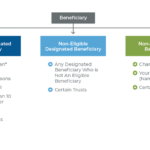Enjoy the current installment of "weekend reading for financial planners" – this week's edition kicks off with the ongoing industry drama of the prospective "Schwabitrade" merger, with a new public "Pledge" from Schwab that it will accept all RIAs regardless of AUM and without any custody fees, buzz that Fidelity will soon require a larger subset of least-profitable RIAs to begin paying a platform custody fee, and Pershing rethinking its prior $250M AUM custody minimum as it too positions to capture potential "NeverSchwab" RIAs that have been rejected by Schwab in the past when they were small and may not want to return from TD Ameritrade to Schwab in the prospective merger.
Also in the Schwabitrade news this week is the fresh revelation from a recent Schwab mid-quarter Business Update to Wall Street that, for the sake of acquisition expediency, they will not likely retain TD Ameritrade's popular (and most open architecture) VEO platform and instead anticipate keeping their own Schwab systems at the core, simply augmenting them with TD Ameritrade technology as it deems appropriate, amidst the latest buzz of what's worrying the advisor community as the Schwabitrade deal continues to ripple (beyond just RIAs themselves on the TD Ameritrade platform, and the broader potential impact to the entire advisor technology ecosystem).
From there, we have several articles on industry regulation, including some pushback from advisor industry associations about the SEC's proposed relaxing of the RIA advertising rules as being a welcome change but one that may put too much compliance burdens all at once on RIAs (as virtually all client communication may be scooped up as being 'advertising' under the new rules), a newly approved model regulation from the NAIC on a "best interests" standard for annuity agents that in practice simply repeats FINRA's existing non-fiduciary suitability requirements, positive progress on NASAA's recent model rule to prevent financial exploitation of seniors (making it easier and safer for advisors to intervene on their clients' behalf), and a new proposal from NASAA to potentially require all advisors under an RIA to obtain 12 hours per year of continuing education credits.
We wrap up with three interesting articles, all around the theme of trying to clean up the advisor industry: the first highlights how lobbying firms representing Wall Street brokerage firms and insurance and investment products continue to drastically outstrip the spending of actual financial advisor advocacy organizations like the IAA, FPA, and NAPFA; the second looks at the emerging regulatory challenge of 'fake comment letters' that create the impression of widespread support or opposition for proposed regulation but in reality are simply fake spam (and may have played a role in the DoL fiduciary rule); and the last is a frustrating profile of an "advisor" who has repeatedly been barred and fined (by both an individual state and then nationally by the SEC), and even convicted of a felony for securities fraud, with an obligation to pay more than $4M in restitution that hasn't been repaid, yet still continues to maintain a state insurance license for the past several years, and holds out to the public as a financial advisor providing retirement income plans to clients to facilitate annuity sales... begging the question of when the various regulators that oversee financial advisors will finally ever get better about coordinating to ensure that bad actors already convicted repeatedly under one regulator don't simply set up shop again as "financial advisors" under a different regulator and continue doing potentially-problematic business with consumers?
Enjoy the 'light' reading!







 Welcome back to the 163rd episode of Financial Advisor Success Podcast!
Welcome back to the 163rd episode of Financial Advisor Success Podcast!

